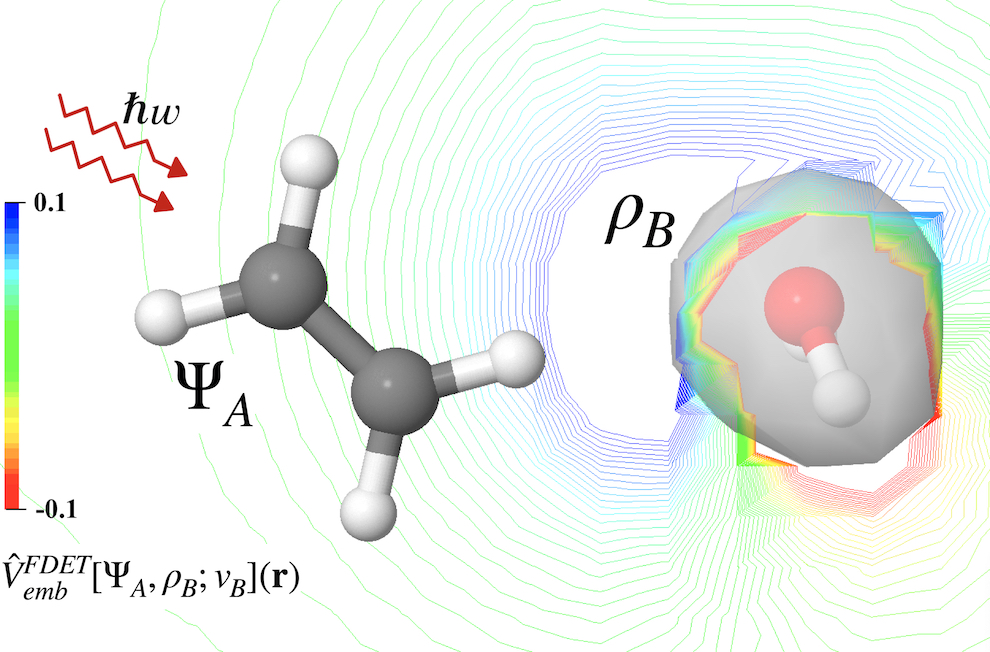The Challenge of Accurate Computation of Two-Photon Absorption Properties of Organic Chromophores in the Condensed Phase
Two-photon absorption (TPA) spectroscopy offers a broad area for applications. It makes it possible to observe dark states, for which the dipole transitions are not permitted. The computation of TPA cross sections depends not only on one excited state but all the excited states according to the sum-over-states expression thus remaining a big challenge nowadays. Two strategies are applied to evaluate the effect of the environment on the TPA cross sections for two characteristic excited states of C2H4 upon complexation with H2O. The supermolecular strategy provides the reference complexation-induced shifts and uses either the EOM-CCSD or ADC(2) method. The embedding strategy is based on frozen-density-embedding theory[1] (FDET) and uses only fundamental constants. The TPA cross sections from high-level supermolecular calculations are extremely basis-set-sensitive. Literature data and the present study indicate that accuracy of the absolute TPA cross sections below 100 atomic units and their shifts below 10 atomic units remains a challenge. The obtained FDET results show a similar basis-set behavior. For the largest basis set (d-aug-cc-pVQZ), TPA cross sections obtained from these two strategies are in excellent agreement. The complexation-induced shifts have the correct sign of the effect and a small (12−33%) relative error in magnitude[2]. The deviations of the FDET-derived shifts from the reference are of similar magnitude as the reliability threshold of the reference shifts.

[1] Wesołowski, T. A. Embedding a multideterminantal wave function in an orbital-free environment. Phys. Rev. A 2008, 77, 012504
[2] Fu M, Wesołowski T. A. The Challenge of Accurate Computation of Two-Photon Absorption Properties of Organic Chromophores in the Condensed Phase. J. Chem. Theory Comput., 2021